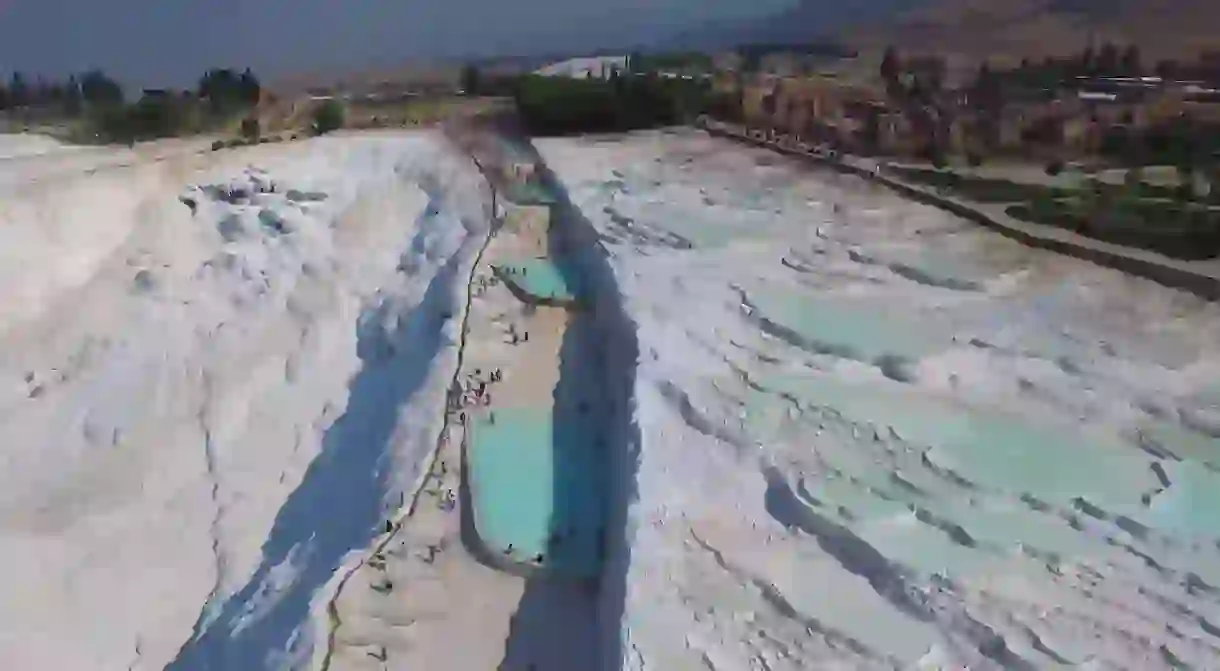The Rejuvenating Powers of Turkey's White Thermal Pools

The hanging white pools of Pamukkale are one of Turkey’s most popular attractions. The mineral-rich travertine terraces were once bathed in by Roman dignitaries, but today you can visit the natural wonder without having to bring an army of your own.
Pamukkale, literally translated as ‘Cotton Castle’, is home to spectacular natural springs and thermal pools, as well as the ruins of the Greek-Roman city of Hierapolis. Over two million visitors pass through here every year, making it a popular UNESCO Heritage Site that combines the best that mother nature has to offer with the marvels of the ancient man-made world.
The spectacular cascading travertine “steps” have been formed over millennia from the limestone residue of the surrounding hot springs. These also leave behind the white slush that can be bathed in, with many visitors claiming the waters have rejuvenating qualities.

Pamukkale-Hierapolis sits south of Istanbul in the west of Turkey. The region is relatively remote when you remove tourists heading to Pamukkale itself, but it’s well connected by road. Regular bus services run from all the major cities in the country, and most visitors tend to take up the affordable option of hiring a car to make a refreshing day trip.
The nearest airport is Denizli, and there are also limited rail services from Selçuk.
Given how popular the pools are, it is hard to avoid the crowds. Peak times are in the afternoon through to sunset, so get there early if you value peace and quiet. It’s also worth exploring the area in winter, although it can get cold at this time of year (the months from October through March).
One final tip from regular visitors is to bring a waterproof bag. Most of the walkways heading to the pools, and well as the pools themselves, can only be accessed barefoot to protect the delicate terraces. Pack away your footwear and ideally have your swimsuit already on!













